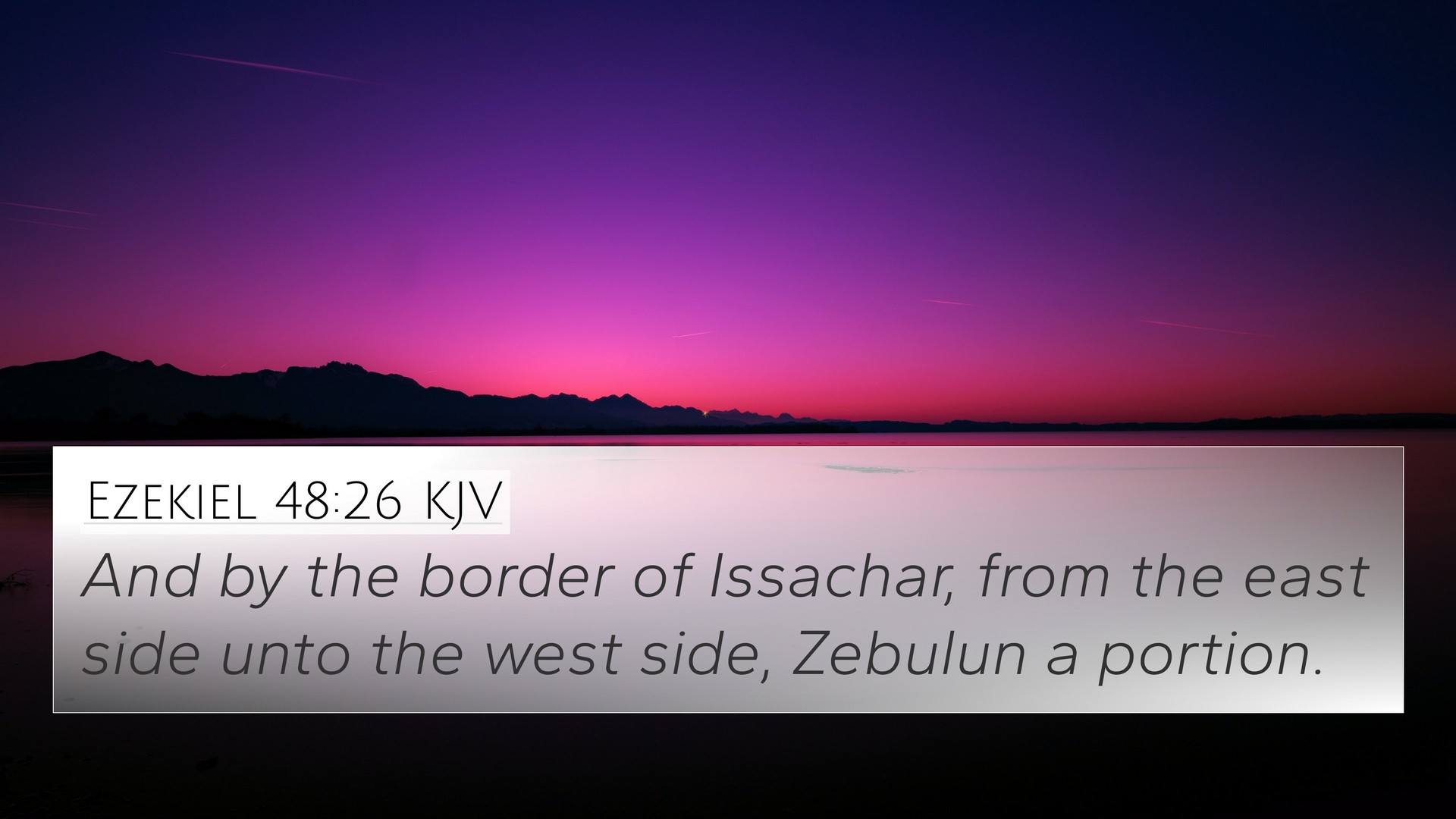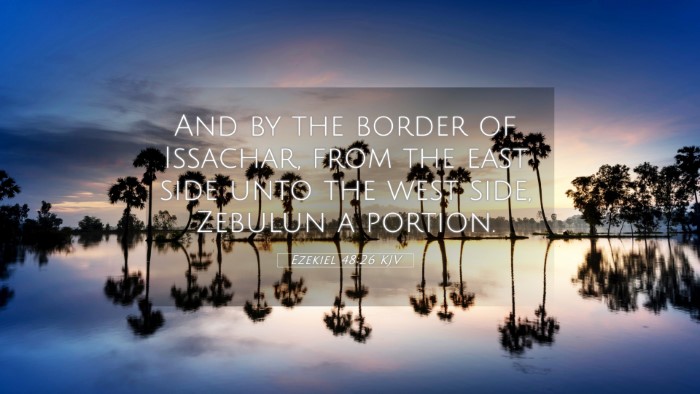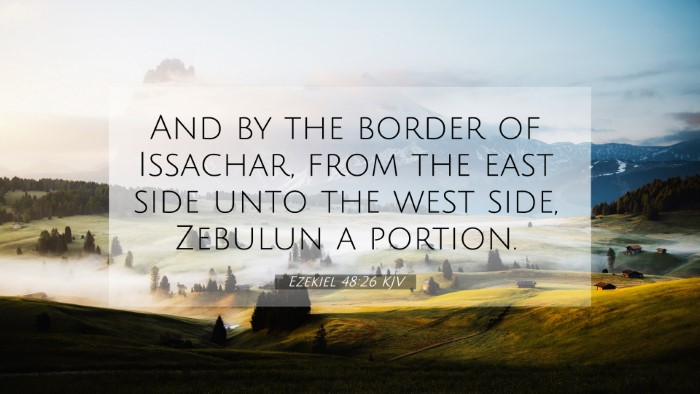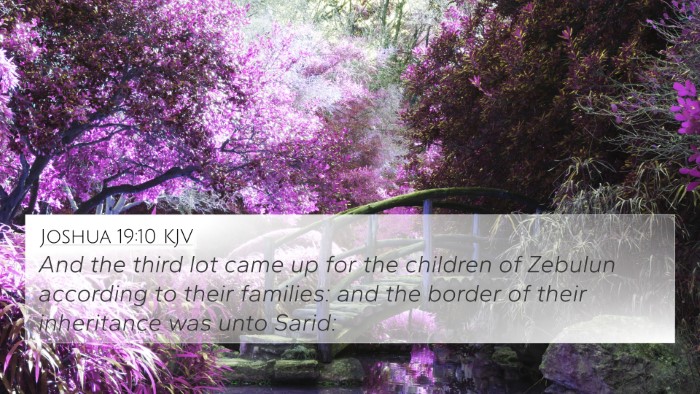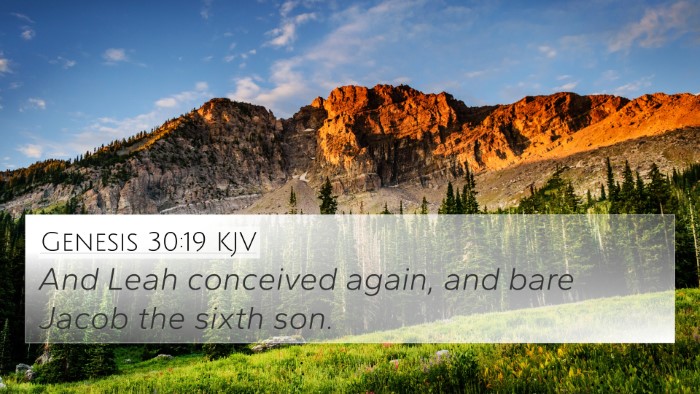Ezekiel 48:26 - Understanding the Verse
Ezekiel 48:26 states:
“And by the border of Benjamin, from the east side unto the west side, shall be the offering which ye shall offer; twenty-five thousand reeds in length, and ten thousand in breadth.”
Summary of Meaning
The verse presents a specific instruction regarding the measurements of land allocated to the tribe of Benjamin in the final vision of the division of the land among the tribes of Israel. The land spans 25,000 reeds in length and 10,000 reeds in breadth. This aligns with Ezekiel's overall theme of restoration and the ideal future for Israel, emphasizing divine order and allocation for the tribes.
Contextual Analysis
This verse resides within the context of Ezekiel 47-48, where the prophet describes the allocation of land among the tribes of Israel, especially after the return from exile. The measurements are significant as they denote ample space for the tribe of Benjamin, symbolizing God's provision and care for each tribe, ensuring every tribe's presence in the promised land.
Insights from Public Domain Commentaries
Matthew Henry's Commentary
Matthew Henry notes that the description of the land allocations indicates the great care that God takes in organizing the tribes. The measurements are not arbitrary; they symbolize justice and equity in God’s distribution. Benjamin, being a significant tribe that descended from Jacob's beloved wife, Rachel, receives a notable lot which reflects its importance in Israel's history.
Albert Barnes' Notes
Albert Barnes highlights the geographical and spiritual implications of the land distribution. The precise measurements signify God's detailed plans for His people, ensuring that each tribe has a rightful place. Barnes emphasizes that the mention of the 'offering' likely refers to a portion set aside for sacred purposes, indicating a connection between land and divine worship.
Adam Clarke's Commentary
Adam Clarke provides a thorough examination of the significance of the border defined for Benjamin’s portion. He points out that the tribe of Benjamin had its share of the land during the distribution, which reflects the historical significance of the tribe as a warrior tribe, essential in times of conflict. Clarke also references the historical context of Benjamin’s geography, noting its strategic significance.
Connections and Cross-References
Ezekiel 48:26 can be cross-referenced with several other scriptures that relate to the land distribution and the significance of the tribes of Israel. These connections enhance understanding and form a rich tapestry of Biblical narrative.
- Joshua 13:7 - Discusses the allocation of land to specific tribes.
- Joshua 18:11-14 - Details the borders given to the tribes of Benjamin.
- Jeremiah 32:44 - Mentions land purchases in the territory of Benjamin.
- 1 Chronicles 12:16 - Highlights the men of Benjamin supporting David.
- Romans 11:1 - Paul discusses his heritage from the tribe of Benjamin.
- Deuteronomy 3:28 - Themes of land inheritance are established.
- Matthew 2:6 - Connects Bethlehem (in Benjamin) with the Messiah.
Thematic Connections
This verse presents themes of:
- Divine Justice: The fair allocation of land signifies God's justice.
- Restoration: Reflects the returning captives and the reinstatement of tribes.
- Covenant Fulfillment: Indicates God’s faithfulness to His promises to Israel.
Tools and Techniques for Cross-Referencing
To explore inter-Biblical dialogue and connections, one can utilize:
- Bible Concordance: To find related verses and themes.
- Cross-Reference Bible Study Guides: To facilitate comparative scripture analysis.
- Bible Reference Resources: For in-depth studies and thematic explorations.
Conclusion
Ezekiel 48:26 provides a profound insight into the meticulous planning of God concerning His people, illustrating themes of justice, restoration, and covenantal faithfulness. By cross-referencing this verse with others, believers can gain more profound insights into the character of God and His dealings with Israel, showcasing the importance of linking Bible scriptures to understand the whole narrative more completely.
